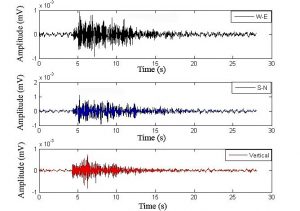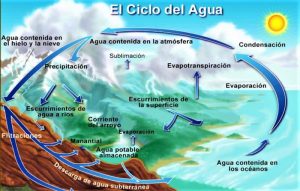Epicenter
Earthquakes can cause large amounts of death and destruction. For this reason, understanding them is critical to community members. Like all major events, seismic or otherwise, they have to start somewhere. The epicenter is the place on the Earth's surface where earthquakes begin and are generated.
What is the epicenter?
It is the word used in geology to determine the place on earth where an earthquake or tsunami originates. It is the place that generally suffers the most damage when a tectonic or seismic movement occurs.
It is usually the place where earthquake waves are most intense and, as a result, it is also the place with the most damage. But sometimes this can change. If an earthquake is particularly large, it can cross a large section of the plate boundary. In this case, the epicenter could be just one of the many locations of the most damaged places, and the damage could be greater elsewhere.
Etymology of epicenter
The word epicenter is made up of two words of Greek origin. The first “ἐπί” pronounced as epi has the meaning “above” and the second word “κέντρον” has the meaning center. The term was coined in 1880 by the Irish geophysicist Robert Mallet.
Damage in the epicenter
It should be remembered that the epicenter is the geographical point closest to the focus of the telluric movement and is usually the most affected area of all. It is the place in the Earth’s interior where the tremor originates and where the waves generated by the movement begin. It is usually the place that suffers the greatest damage to infrastructure, including loss of human life.
Epicentral distance
One of the main functions of the tasks performed by a seismological observatory is the location of both the epicenter and the epicentral distance in order to determine the origins of seismic sources. The epicentral distance is the distance between the hypocenter and the places where the seismic waves propagate during the event. It can also be defined as the distance between a person and the place where the epicenter of the earthquake takes place, measured on the surface of the earth.
Importance
The main importance of determining the epicenter is to identify the fault that broke or has mobilized causing the earthquake. If the fault is recognized, then the earthquake can be used to augment or modify, if necessary, the risk modeling for the area that has been affected. If the fault is previously unknown then it is important because it means that risk models for the affected area need improvement.
When epicenters are known, building codes focus on mitigating the expected risks. Therefore, risk models for an area are built on the basis of hazards that have been previously identified, and risks that are considered unlikely to occur tend to be left out of the models.
It is also important because when you know the epicenter of an earthquake, you know that the area is prone to this type of event and you can make decisions regarding building codes to avoid future disasters.
Examples of epicenter
- Earthquake in Chile on the 22nd of May 1960. With an intensity of 9.5, its epicenter was located in Valdivia city and was the earthquake of greater intensity that has been registered in the planet.
- Earthquake in Indonesia, which epicenter occurred in Sumatra on March 28, 1964. It produced an uprising of the soil in the continent.
- Earthquake in Japan on March 11, 2011. Its epicenter was on the coast of Honshu and caused a tsunami that struck with waves 2 meters high. It caused the earth’s axis to move 10 centimeters. Fukushima nuclear accident happened with this earthquake.
- Earthquake in Peru on August 13, 1868. Its epicenter was located in Arica and could even be felt in Bolivia. It caused a tsunami that also affected the coasts of California, Hawaii and the Philippines.
Earthquake of South Carolina, United States, which epicenter was in the same place on Tuesday August 31, 1886 at 9:50 p.m. In 6 to 8 minutes, the earthquake was felt in Philadelphia, New York, Chicago and St. Louis. In the Charleston area, 100 people died as a result of the earthquake, houses cracked and collapsed, sand beds exploded in the air and produced craters with surrounding blankets of expelled sand. The magnitude of the earthquake was estimated between 7.0 and 7.7.
How to cite this article?
Briceño V., Gabriela. (2019). Epicenter. Recovered on 23 February, 2024, de Euston96: https://www.euston96.com/en/epicenter/










